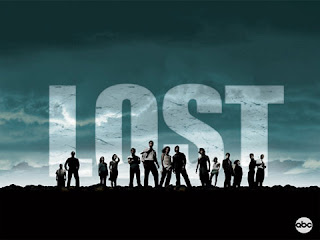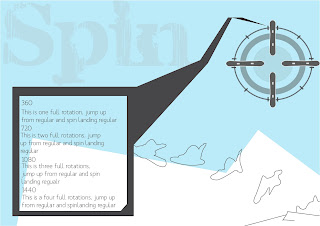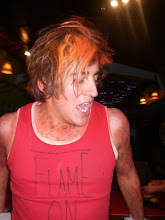What practical skills have you developed through this module and how effectively do you think you have applied them?
I think mainly I have developed my work ethic for the better. Compared to the last module I’ve put a fair amount of more time to doing my work and I feel that from doing so I’ve got a lot more out of it. I think I’ve done this pretty effectively as the work I have managed to produce in my opinion is rather lovely. Better than my earlier work anyway.
I am now fairly confident with InDesign, before the module I had never used it and now I’m proud to say I can duplex print and have an understanding on the process of designing page and book layouts. With this skill I’ve shown I can do it with the 16 page booklet, however I did get the paper size wrong, oops. Furthermore my swatch book is evidence of duplex printing, just done without facing pages.
What approaches to/methods of problem solving have you developed and how have they informed your design development process?
Throughout this module I obviously came across problems and I feel that I solved them fairly well in line with the brief and in a way that compliments and fits in with the general design. I think What helped with this module is that it was really quite open and broad, which gave us the chance to really do something that we want to and can easily get excited about which helped me to personally put a lot of effort and time into, also finding the work more enjoyable but nevertheless more stressful. The main method I developed towards problem solving would be keeping in mind who and what I’m designing for and from this I found solutions, asking questions like what does this thing have to achieve? The answers come naturally, from their it’s a matter of bringing it to life.
What strengths can you identify in your work and how have/will you capitalise on these?
A strength I can identify within my work is being able to produce ideas quickly, with this I can sooner find if that idea is any good and if it does or will work. To capitalize on this is to document clearly that idea straight away, whether that be a print out or a post on my blog as I find that I have to go back to find these earlier ideas to prove that I did actually have them.
I also found with the body of my work that I respond well to criticism and other peoples opinions, (I will however sulk for an hour) but looking back at crits and blog comments there’s evidence from there after of change and development of my ideas which reply to what was said. So I just need to keep the open mind to capitalize with this in the future and to respect everyone’s opinion.
What weaknesses can you identify in your work and how will you address these more fully?
I find with working in general I have my on and off days, and its evident that with some work from this module that my head or heart wasn’t fully in it and I didn’t get the end product that I feel I’m capable of, to combat this I have decided that when I’m working and feel that “can’t be bothered attitude’ to put that work away and just do something for another project. As I never have just one project, I did this once or twice during the module and I found it helped. It seemed to occur whilst sitting at a Mac for hours, so when it happens again I plan to just go away get a fine line out and draw for another brief.
I also found that within the project I felt I was doing the same thing over and over, just with a different cover. Looking specifically at the book project I was constantly relying on Illustrator to create images, this was a choice made really due to time and the quickness of it as I was designing page by page which became very time consuming. To address this I feel I need to remember that I am actually fairly confident in producing images and text by hand and can often lead to a better result. I feel that I was getting worried about not finishing the book and as I was putting a lot more effort in I wanted something to show at the end for it, so in my mind adobe was the obvious choice to getting it finished.
Another slight weakness I feel I have is to present work in a more neat and stylish way, I feel I lack design sheets which is a useful way to mount work and show in a decent way, so I guess to address this is to simply start producing more design sheets, with the intention of a slick outsome.
Identify five things that you will do differently next time and what do you expect to gain from doing these?
1. Use more drawn and original imagry; Having a more personal styled work
2. Document idea and development as I do it, blog/prints; a clear body of of work that flows from idea to idea
3. Stay later in Uni, come in on Wednesdays, come in on Saturdays more often; getting work done efficiently, less distraction, equipment available
4. Present body of work more neatly, slick design sheets; better looking work
5. Photograph with an SLR; better quality of images captured
Are there any things we could have done differently that would have benefitted your progress?
I feel pretty satisfied with the support given and everything so, nothing that I can think of! Well done
How would you grade yourself on the following areas:
(5=excellent, 4=very good, 3=good, 2=average, 1=poor)
Attendance: 5
Punctuality: 5
Motivation: 4
Commitment: 4
Quantity of work produced: 2
Quality of work produced: 3
Contribution to the group: 4
Speaking from experience 16!
14 years ago

 So this is what im thinking for the front cover, its not fully finished need to add the title and my own name, but it will look similar to this if other people like it,
So this is what im thinking for the front cover, its not fully finished need to add the title and my own name, but it will look similar to this if other people like it,

 looking firstly at Lost, the general plot behind this waste of time is a plane crashes somewhere in the south pacific, the survivors end up on this mysterious island. Straight away the premise has an action and consequence,
looking firstly at Lost, the general plot behind this waste of time is a plane crashes somewhere in the south pacific, the survivors end up on this mysterious island. Straight away the premise has an action and consequence,  This is quite a simple image really, but i only found out how it can be done during the photoshop induction, using the single row marque tool, i just dragged a row of single pixels out, extending the colour this way, short and sweet.
This is quite a simple image really, but i only found out how it can be done during the photoshop induction, using the single row marque tool, i just dragged a row of single pixels out, extending the colour this way, short and sweet. Here i used a combination of selection tools, dragging them over to a canvas, paint bucket, bang. Aswell as creating my own paintbrush's from shapes and paint splatters, with an added background. Three layers of pure beauty!
Here i used a combination of selection tools, dragging them over to a canvas, paint bucket, bang. Aswell as creating my own paintbrush's from shapes and paint splatters, with an added background. Three layers of pure beauty!




